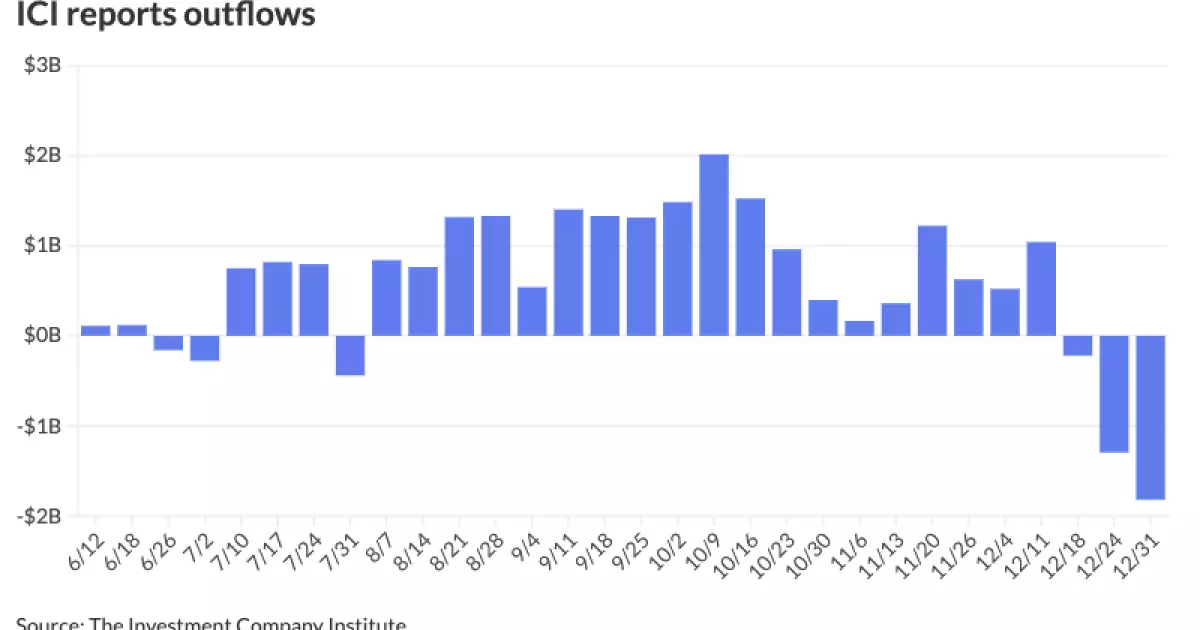In recent days, the municipal bond market has experienced notable volatility, reflecting broader financial dynamics as the Federal Reserve adopts a more cautious approach toward monetary policy. The fallout from this shift has resulted in increased yields across various maturities, particularly impacting long-term investments. As investors navigate these changes, understanding the implications for municipal bonds is crucial for informed decision-making.
On a recent Wednesday, key indicators showed that municipal bonds faced significant sell-offs. The resulting yield curves reflected losses, especially at longer maturities. U.S. Treasuries, on the other hand, managed to close slightly higher, a contrast to the declining municipal yields. This scenario illustrates the apprehensive sentiment prevailing in the market as municipal yields rose by as much as 12 basis points.
Recent data presented by Municipal Market Data indicated a rising trend in municipal-to-U.S. Treasury ratios with figures revealing ratios of 65% for two to five-year maturities, slightly nudging higher up to 81% in the 30-year bonds. These shifts are indicative of larger market trends where investors are reassessing their strategies while navigating the Federal Reserve’s cautious posture regarding future rate adjustments.
The minutes from the December meeting of the Federal Open Market Committee (FOMC) elucidated a prevailing concern among Fed participants regarding inflation and economic activity. Economists noted that the Federal Reserve intends to reduce the pace of any rate cuts, a fact that some analysts believe could affect the bond market’s confidence levels. Sal Guatieri from BMO Capital Markets highlighted that the Fed appears to be “at or near the point at which it would be appropriate to slow the pace of policy easing,” suggesting that economic indicators are being interpreted more cautiously as inflation remains a valid concern.
With inflation rates exceeding desired targets and rising consumer spending, the Fed is poised to take a more conservative approach. Guatieri noted that the median Fed member has revised the easing plan for 2025, slashing it to merely 50 basis points, adding a layer of uncertainty to the economic outlook.
The Bond Market’s Reaction
Byron Anderson, head of Fixed Income at Laffer Tengler Investments, reflected on the current sentiment, stating that the bond market appears to be losing confidence in both the Fed and Treasury. The dynamics within the bond sector have led to a situation where short sellers hold significant sway, fostering an environment rife with pressure. Factors contributing to this include increasingly sloppy Treasury auctions and historical levels of maturity approaching.
Anderson pointed out that a substantial $14.6 trillion will become due over the next 24 months. This looming debt convergence adds another layer of complexity, with primary dealers potentially forced to absorb greater portions of these auctions, stirring concerns around liquidity in the bond market.
Despite the challenges facing the bond market, some analysts argue that the municipal sector is presenting a “compelling case” for both risk and reward. From the viewpoints of analysts like Cooper Howard at Charles Schwab, the yields, although lower relative to Treasuries, remain attractive when considering tax implications.
Nonetheless, as 2025 approaches, the market landscape may be shifting. Howard noted that tighter spreads for lower-rated issuers pose a potential headwind, suggesting that the dynamics of credit quality may also influence overall performance.
Outflows from investment vehicles indicate investor polarization; for instance, a withdrawal of $1.821 billion was reported by the Investment Company Institute (ICI) while notable inflows were observed in exchange-traded funds, a juxtaposition reflecting varied investor responses in this uncertain climate.
The coming weeks and months will likely prove pivotal for both the municipal and federal bond markets. As fiscal strategies evolve amidst changing economic indicators, understanding the correlation between Treasury dynamics and municipal yields will be essential.
Investors must stay attuned to the Federal Reserve’s evolving language around interest rates, while also keeping an eye on broader economic fundamentals such as inflation and consumer behavior. With numerous bond maturities set for the near term and the potential for further shifts in policy, a careful analysis of market fundamentals is paramount for anyone looking to navigate the complexities of the current bond landscape efficiently.
As the Federal Reserve reassesses its rate-cut trajectory, the implications on the municipal bond market could be far-reaching, emphasizing the need for strategic foresight in investment decision-making. Adjusting to these changes will not only require an understanding of present market dynamics but also prudent planning for future fiscal adjustments.


Leave a Reply